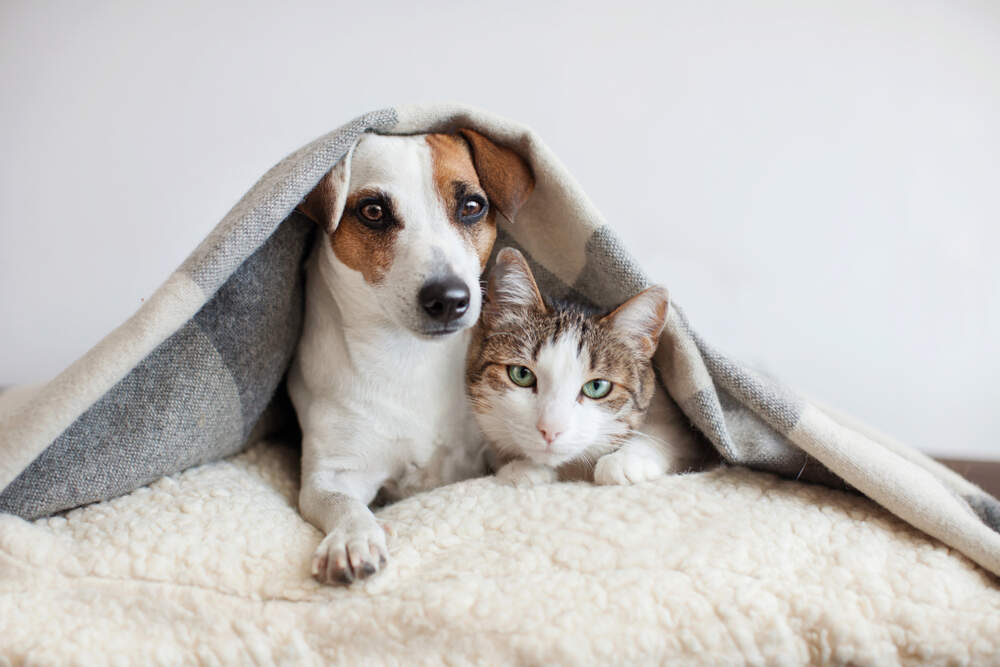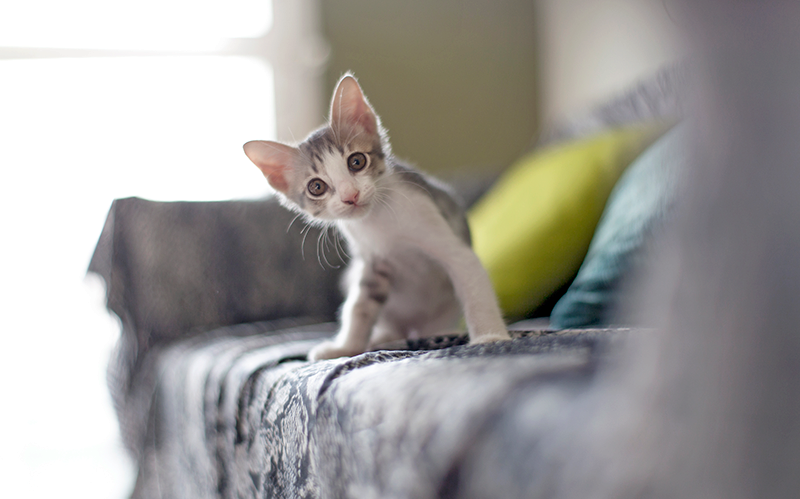Leaving a Stressed Pet Home Alone
Many of us have been sheltering in place because our employers have asked us to work from home to help reduce the spread of COVID-19. In some cases, pets that used to be alone during work hours suddenly had their family home all the time—and they loved it. Other people adopted pets for the first time, and these dogs and cats have only known a life where their owners were home with them. But now things are changing again.
If there was one silver lining to sheltering at home these last few months, it was having the precious time to bond with your pets. Going back to work is a tough transition; it's another stressful life change. Do you feel guilty for leaving your cat home alone? Are you concerned your dog will be sad when you're at work? If you prepare your dog or cat for your new schedule and turn your departure into a fun game, you'll alleviate their stress. But it requires a lot of planning, care, and love.
The Comfort Zone team wanted to speak to an expert about making the transition as painless as possible. So we spoke to Tom Van Winkle, Executive Director of the Hinsdale Humane Society, for some expert advice on how to successfully navigate pet stress as your work schedule returns to normal. Tom's involvement in animal welfare encompasses more than 20 years. He began by volunteering with and serving on the board of a local humane society. He was happy to share some tips and insights he's learned over the years to help you as you help your pet with stress.
A Stressed Pet May Act Out or Withdraw
Just like us, pets can react to events and situations that are not part of their routine. Unlike us, our pets can't tell us how they're feeling. As a pet parent, it's important to pay attention to the signals your dog or cat may be giving you to tell you they are not okay with changes in their environment.
The signs of stress are often obvious, but they can sometimes be quite subtle, Van Winkle shared. A dog might start chewing on things he usually leaves alone, especially if something smells like you, such as your favorite pair of shoes. A stressed cat might scratch places she shouldn't, mess up her litter box, or even pee on the shirt you left on the floor.
"Owners think they're mad and trying to get back at them, and of course they're not," he said. "They're just trying to relieve the stress they're under."
There are more subtle signs of stress too. Pets might become more withdrawn or act confused. A dog might stop greeting you when you get home. A cat might hide more. Depending on how active your household is, you might not notice these subtle signs right away. Even a pet that never had stress issues previously might have problems now if he's used to being with the family all the time.
Prepare Them for Your New Schedule
You don't have to wait until you're working again to help your pet. Start building your cat or dog's confidence now. Go for a short walk and leave your dog behind. Go into the backyard without your cat. Run an errand without your pet.
"Instead of me leaving for work for eight or ten hours a day right away, I can leave for ten minutes, for twenty minutes, or half an hour," he said. "It works my pet into that routine slowly versus one day I'm here, and the next day I'm gone."
Play Hide and Seek with Treats
Make leaving a fun activity rather than a dreaded event by hiding your pet's favorite treats when you go.
"We're going to make my leaving the house party time," Van Winkle explained. "They're going to get something so wonderful out of my leaving. This becomes their going-away gift. It refocuses their brain."
Of course, your pet will realize after a while that you're gone. But this fun activity cuts into the initial stress right as you close the door.
"Your cat knows what's coming when you go outside, so she's already anticipating being alone in the house," he explained. "By giving her something to do, you're distracting her. She looks around later and thinks, 'Oh, where's Mom?'"
You can step things up a notch by turning the goodbye treat into a game.
"If your cat likes treats, sprinkle them around the house and have a scavenger hunt," he suggested. "Make it really easy at first, then start making them harder to find so they have to search for them."
Van Winkle said that for his dog, he throws treats all over the house whenever he leaves for work.
"She was spending her time searching while I left, and that was our little game."
Change Up Your Routine
This anticipatory fear can also be triggered by a routine that indicates you're about to leave. You might trigger your pet if you always do things in the same order—like getting your coffee, then your keys, and then putting on your jacket. So try changing things up. Get your keys and put them in your pocket early. Have your coffee a little later.
Your dog or cat's fear works much like any fear—even a human's, Van Winkle explained. He gets anxious about a visit to the dentist if he has time to think about the appointment.
"Leading up to the dentist is the worst thing," he said. "I have four days to think, 'This is terrible.' With cats and dogs, it's not any different."
Try Crates or Diffusers to Build Confidence
Sometimes a crate is all a dog needs to feel more confident. Van Winkle said his sister-in-law's dog is much happier when left in a crate.
"She was not happy they were gone, but she was not trying to escape because that was her little den, and she felt safe," he said. "If they left her out, she'd cause problems."
For cats, a tall cat tree or condo is great at increasing confidence. Comfort Zone Calming Diffusers help too. They release odorless, drug-free vapors that mimic calming cat pheromones. Comfort Zone Calming Diffusers help your cats feel happy, relaxed, and safe while reducing unwanted behaviors.
"I have seen those Comfort Zone products help," Van Winkle said. "I can't guarantee it will work for every cat. But I think that's part of it—that natural way of helping them overcome some of the stress."
Offer Distractions During the Day
If your dog is having a really tough time adjusting, try hiring a dog walker to stop by during the first part of the day. On the other hand, cats don't always do so well with strangers, so try a different tactic with them. Setting up a window perch so your cat can enjoy the world outside is a great solution that keeps them entertained all day.
Remember, different pets will adjust at different speeds. Some very confident pets may adjust in a couple of days, while others may take weeks.
"Don't assume one bad day means your pet is broken," Van Winkle advises. "If you're willing to put work in, it's going to be resolvable most of the time."
The key is to introduce the change in small doses and remember that every adjustment takes time. If you have any questions, it's perfectly okay to talk with your veterinarian or a trainer. Just have patience and lots of love. Over time, your cat or dog will adjust back to the "old normal."




